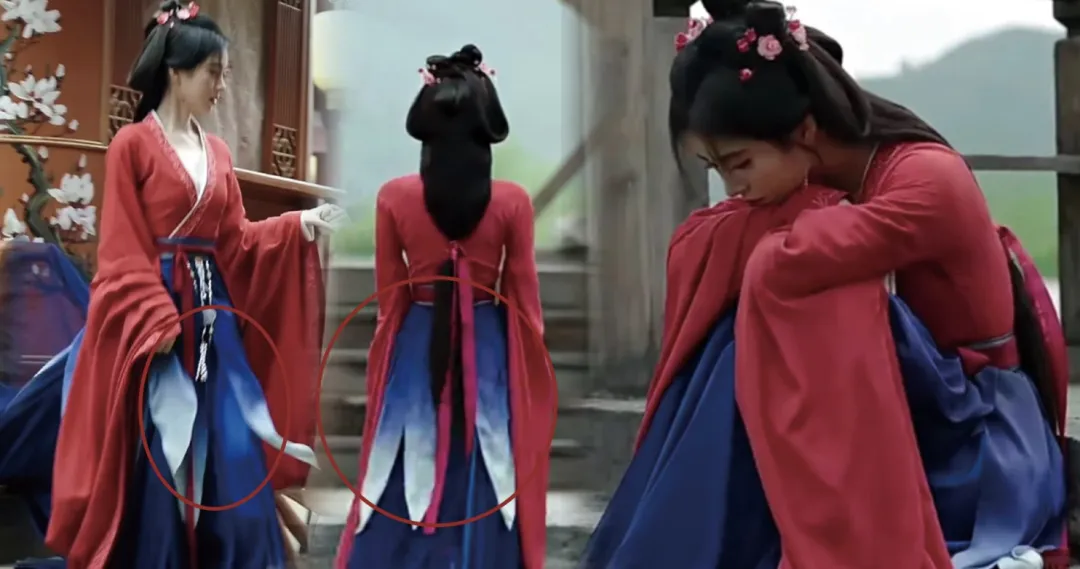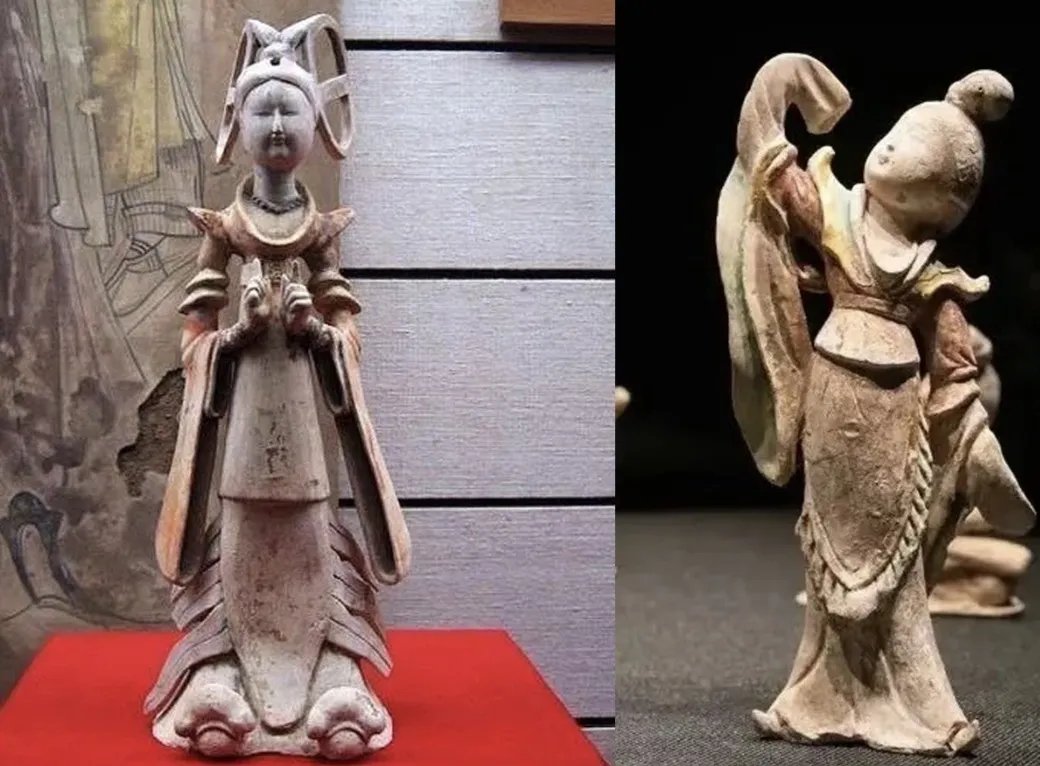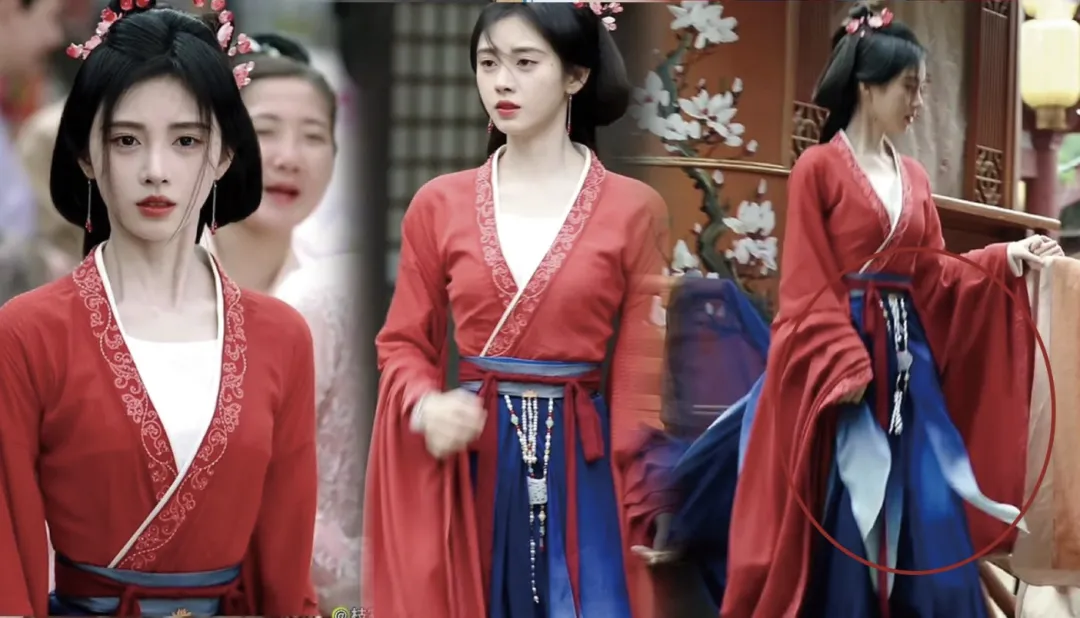In the historical drama 'Hua Jian Ling,' Ju Jingyi's red and blue dress, adorned with petal - like decorations, left a deep impression. Did such clothing actually exist? Let's start with the conclusion. This triangular decorative piece can be referred to as 'Gui' or 'Chui Shao,' named for its resemblance to a jade tablet. Clothing decorated with Gui is broadly called 'Gui Yi,' a type of ceremonial attire. The earliest documented record of 'Gui Yi' appears in Song Yu's 'Ode to the Goddess': 'She shakes her embroidered robe and dons the Gui attire,' which sounds quite romantic. This might be the closest traditional garment to what one would imagine as celestial attire. Its exact structure remains unclear, but its general form can be inferred from paintings.
First, let's explore what 'Gui' is. Descriptions of Gui Yi mention 'the hanging part is wide at the top and narrow at the bottom,' resembling an inverted triangle. As the name suggests, Gui Yi involves attaching 'Gui' decorations to clothing. However, the specifics of Gui Yi remain vague. It has been said to be ceremonial attire for noblewomen and frequently appears in paintings of celestial beings (e.g., Song Yu's 'Ode to the Goddess'). But its exact form can only be deduced from figurines and artworks.
Closely related to Gui Yi is the term 'Chui Shao,' originating from Sima Xiangru's 'Ode to the Imperial Park' (also known as 'Zi Xu Fu') in the Western Han Dynasty: 'Fei Xian Chui Shao.' Sima Biao (243–306 AD) of the Western Jin Dynasty interpreted 'Xian' as ribbons, a Gui decoration, and 'Shao' as 'swallow tails.' Tang Dynasty scholar Li Shan noted that both were essential decorations for Gui Yi. The historical drama 'Du Hua Nian' featured similar attire, so garments with Chui Shao are collectively called 'Gui Yi.' It's worth noting that Chui Shao isn't a fixed - style term but rather refers to decorations with swallow tails or Gui angles.
Based on current archaeological findings, Gui Yi can be understood in four common forms (open to discussion): robe - style, long - coat - style, skirt - jacket - style, and accessory - style. All involve tailoring the right hem into a blade - shaped Gui corner as a decorative element. Among these, robe - style and long - coat - style are one - piece garments.
Robe - style
It was more common in the pre - Qin period, where the hem was directly extended with Gui or swallow - tail panels, as seen in silk paintings from Chu tombs. The swallow - tail straight robes often found in Western Han tombs are likely a variant of robe - style Gui Yi.
Long - coat - style
It refers to modified swallow - tail forms, such as the swallow - tail long jackets seen in the Terracotta Warriors of Shizishan. However, these were not ceremonial attire in their discovered contexts.
Skirt - jacket - style
It involves separate upper and lower garments with Gui corners added to the hem, resembling the Chui Shao - adorned skirts in 'Admonitions of the Court Instructress,' 'Ode to the Goddess of the Luo River,' and 'Portraits of Exemplary Women.' Though the structure is unclear, the Chui Shao appears attached to the skirt (or possibly an inner robe), creating a layered effect.
Accessory - style
It includes Gui decorations resembling aprons, often used as standalone pieces, as seen in 'Du Hua Nian.'
Interestingly, Gui decorations weren’t limited to skirts; they could also be hung at the neckline, shoulders, or back. These variations have been further enriched by archaeological discoveries. Depending on the ceremonial context, Gui decorations ranged from long trailing pieces to shorter ones.
Ju Jingyi’s outfit is a large - sleeved jacket and skirt popular during the Northern and Southern Dynasties, paired with a Liangdang (a square undergarment with shoulder straps, worn either as an outer layer or inner layer) and Chui Shao decorations, creating an ethereal effect when moving. This 'long - cornered' skirt hem gives a floating, celestial vibe. Now, do you have a general understanding of this millennia - old, fairy - like Hanfu attire?




